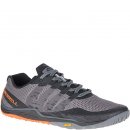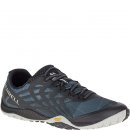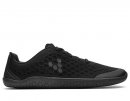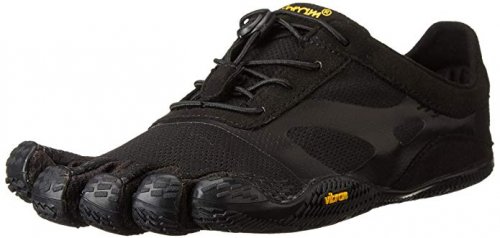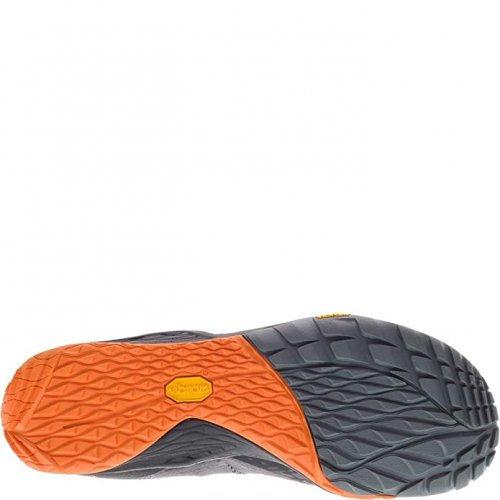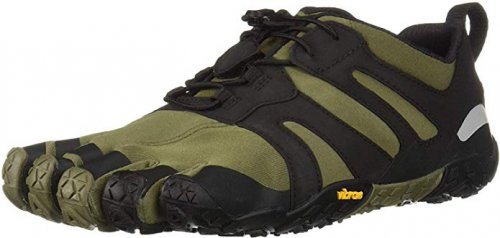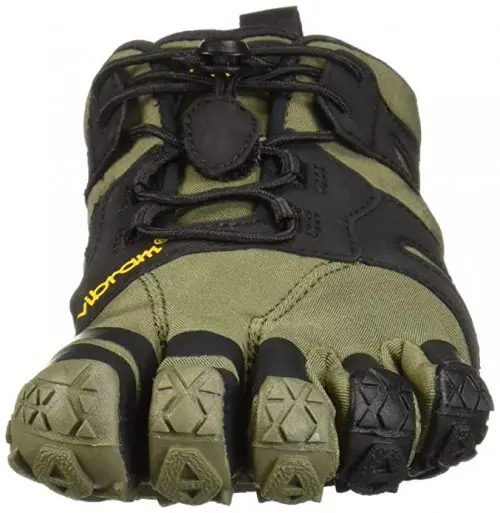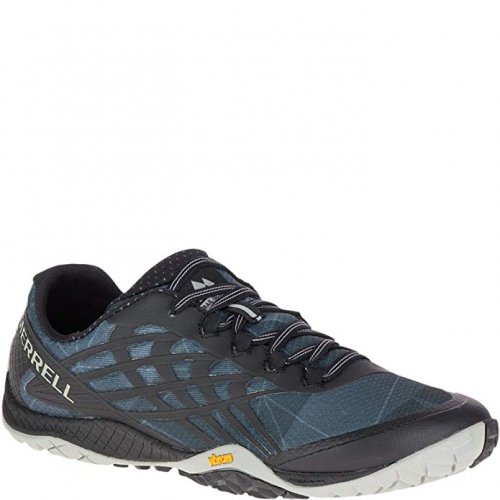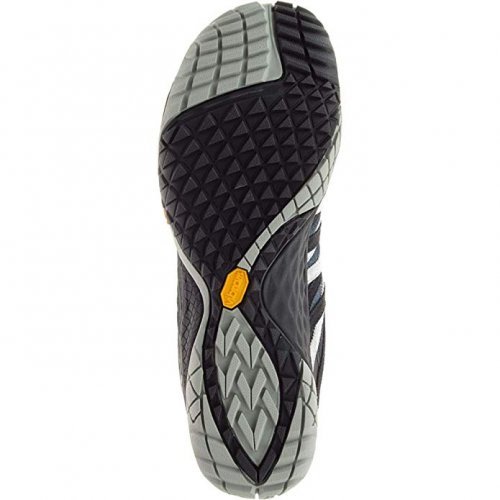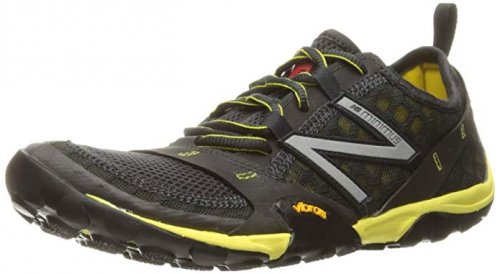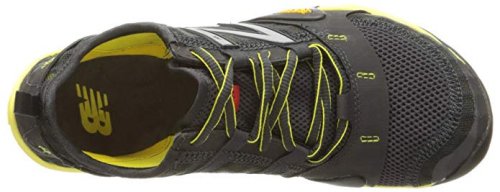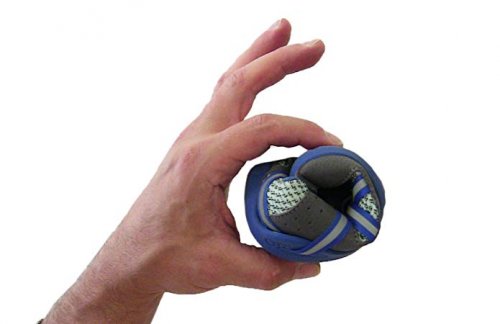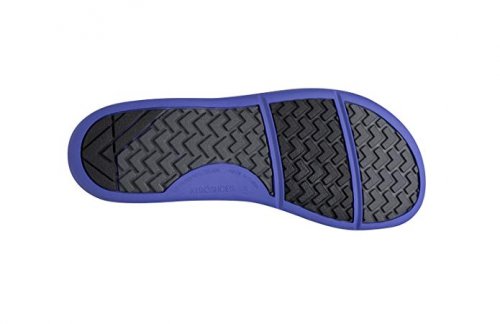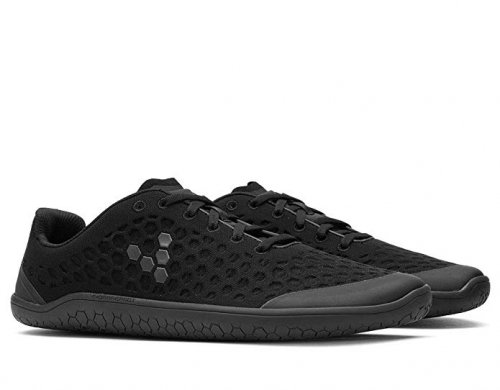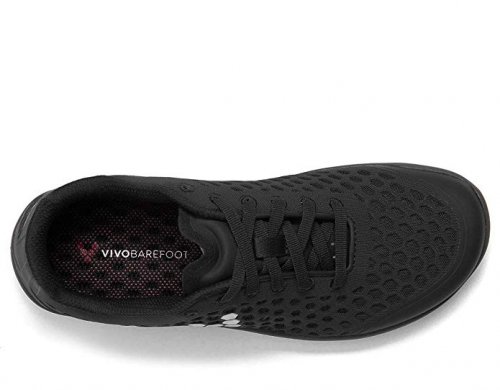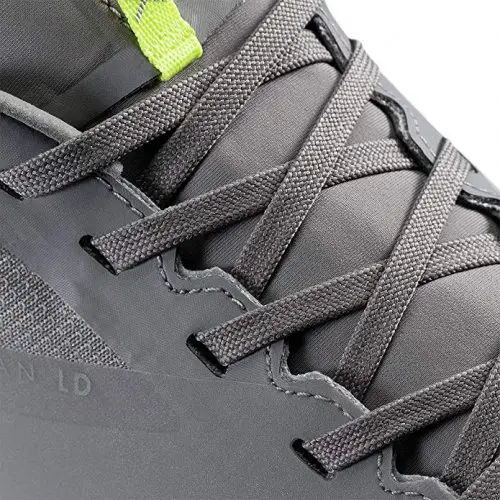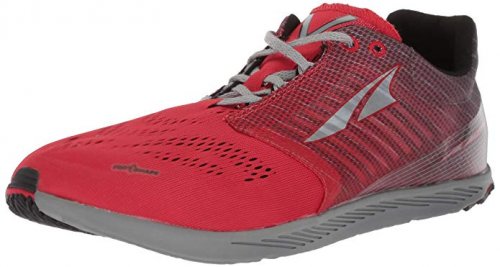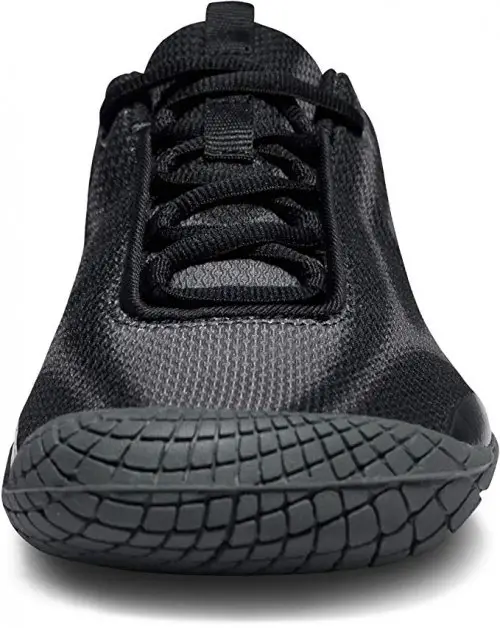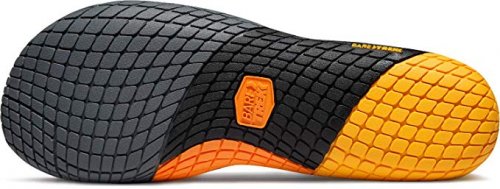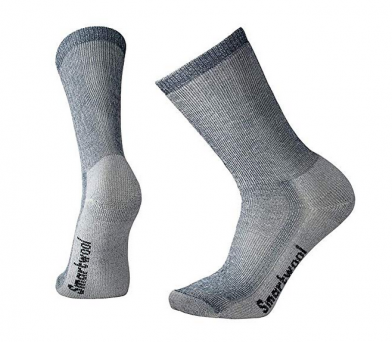Top 10 Barefoot Running Shoes Reviewed and Rated
The first time you saw a pair of barefoot running shoes, your first thought was probably, “what the heck is that thing?” The funny thing is, this is most people’s reactions to the strange-looking sneaker hybrid!
It’s hard to imagine that something with so little padding and seemingly little protection is designed to improve agility and strength, but it’s true. Everything about this unusual-looking pair of footwear is intended to both strengthen and correct points of pressure as well as running accuracy, something that’s highly desirable to most runners.
Since they’re still a relatively new trend, it can be overwhelming trying to figure out exactly which style and design are right for you. That’s why we’ve gone through hours of research in order to find the best barefoot running shoes out there, along with why they’ve earned a top spot on our list.
In a Hurry? The test winner after 4 hrs of research

Truly a minimalist design
Strong traction and grip
Separated toes for a natural feel
10 Best Barefoot Running Shoes
1. Vibram KSO EVO Cross Trainer
Truly a minimalist design
Strong traction and grip
Separated toes for a natural feel
Not everyone will get used to such minimal padding
This is definitely a unique sneaker that catches the attention of many, mainly because it’s about as minimal a design as you can find in a barefoot trainer. Designed specifically with cross-training in mind, the KSO EVO by Vibram is the definition of “barefoot”.
Read moreWhen it comes to choosing a truly barefoot sneaker, it’s better to seek out models that don’t have flashy additions and padding — We’ll discuss that more in-depth later on. That’s why this model is so great for beginners because the most appealing quality is its lack of bells and whistles. The simple, lightly padded exterior mesh is perfect to allow circulation but it’s not padded enough to take away from running, which is very much the point. The tread along the bottom features a strong-gripping XS Trek outsole, which will prevent slipping and increase traction when it comes to various surfaces and environments.
The separated toes of this design are intended to make a runner feel as though they are truly running barefoot — thus keeping them connected to the ground they’re treading on while also helping them to remain aware of their terrain. The thin design is intended to allow runners to also make decisions about their running style based on what they feel through their soles; for example, running through sand vs. running over rocky terrain. The KSO EVOs allows athletes to experience their running journey from a whole new perspective, and with “feedback” and “protection”.
2. Merrell Trail Glove 5
Great for beginners
Lightweight for quick movement
Strong traction
Might not be weighted enough for track runners
The Merrell Trail Glove 5 is geared more toward those who aren’t fully comfortable with a true “barefoot” sneaker, while still feeling as natural as possible. The design of the Trail Glove 5 includes minimal padding yet slightly more protection than a form-fitting barefoot sneaker.
Read moreThe exterior of the sneaker is lined with a breathable mesh which is similar to most running shoes, however, the laces are no-show, adding to the minimalist style of the overall design. The base of the sneaker offers enough support for a natural foot arch as well as protection against heel impact but is still thin enough that a runner can truly connect with the terrain they train on. The sneakers themselves are incredibly lightweight and are designed to feel weightless, something you’ll likely either love or hate; as it’s a personal preference.
Because the sneaker is so lightweight, runners will have more control over their movements and notice increased agility. Even the heel and sole have been designed to provide traction and control, whereas the arch of the sneaker lends ample support without being too padded.
3. Vibram V Trail Runner
Flexible yet structured to provide adequate support
Great for beginners to barefoot running
True gripping power
Has a higher back that might irritate some
With a similar design to the KSO EVO Cross trainers, the V Trail Runners vary in several important ways. This sneaker began as an improvement to a previous model — the Spyridon MR — and has quickly become a fan favorite for barefoot running sneakers.
Read moreWith a bit more structure than other barefoot designs, the V Trail Runner is crafted with a polyester blend, making it durable yet strong. The sole of the shoe has been designed and molded with 3D Cocoon technology, which has allowed it to outlast many other designs in its class. This extended 3D molding has allowed Vibram to enhance the running experience, mainly by providing twice as much support in the ball of the foot.
Another great attribute about these sneakers is the tread. Its appearance is quite unique, yet it excels when it comes to gripping, making these a great option for outdoor runners as well as trail runners (as the name implies!). EVA foam has been incorporated into the insole which provides more structure while still maintaining plenty of flexibility and an excellent range of motion. The hidden gem in this sneaker design is the addition of anti-microbial poly fabric in the sock liner, which is good news for those who really grind outdoors.
4. Merrell Glove 4 Trail Runner
More padding than most minimalist shoes
True to size
Great for outdoor trail running
The soles can wear down quicker than the rest of the sneaker
Yet another great option for those who aren’t fully on-board with an entirely barefoot sneaker, the Glove 4 Trail Runner is an earlier model of its predecessor. While still entirely relevant, this sneaker is still generating tons of buzz with some impressive stats that just might have you switching from your current gym kicks.
Read moreThese sneakers are incredibly durable and long-lasting, which is one of the reasons they’re still so popular, even now. Their mesh exterior allows for great circulation, even on the harshest of runs. This also makes them great for outdoor use, as they’ll dry fairly quickly. With a minimal 4mm synthetic sole, runners will find that the Glove 4 Trail Runner provides a decent amount of support while still allowing them to feel the ground underneath. Increased protection makes them great for rough trails as well as higher-impact running, a benefit that doesn’t always come with minimalist footwear.
The tread is decent and provides adequate grip which is sure to last many long runs. The fit is also something that keeps Merrell fans coming back since their sizing is on-point and rarely off, providing a secure, snug fit every time.
5. New Balance MT10V1 Minimus Trail Runner
Sneakers are lightweight for the more efficient running
Antimicrobial treatment to prevent odors
Naturally contoured
Can be a tight fit for wide feet
The Minimus Trail Runner is New Balance’s addition to the barefoot sneaker movement and it’s an excellent choice from a trusted brand. From the outside, the shape of the sneaker contours to the natural curves and arches of the foot, improving mobility and agility. This means that a runner’s overall efficiency will increase, along with speed and control while rounding corners, potentially cutting down finishing times.
Read moreThe entire sneaker is designed with synthetic mesh material, allowing the flexibility that’s needed to adapt to various trails conditions. True rubber soles increase traction which is great news for those running track as well as those hitting trails outdoors. Acteva midsole is designed to naturally arch with the foot, which makes it a great go-to for newcomers to the notion of barefoot running.
What makes the Minimus Trail Runners truly shine is the fact that while you’re wearing them, they’re actively fighting bacteria that could be harmful if not cleaned properly. The synthetic mesh is treated with an antimicrobial to reduce odor and inhibit the growth of smelly bacteria. Shoes that deodorize themselves? Sign us up!
6. Xero Shoes Prio
A great balance between fitness sneakers and barefoot footwear
Minimal padding means improved posture
They can be rolled and stored in backpacks, bags, etc.
Not as minimal as other barefoot runners
Have you ever wanted a pair of sneakers that you could just roll up and store in your back pocket? Well, with the Xero Prio sneakers, you just might be able to. A benefit of barefoot sneakers is that most of them don’t have stiff soles like a typical sneaker, therefore, they’re far more flexible. The Xero Prio's are designed exactly in this image, which means they move with the runner rather than the runner being forced to move them.
Read moreThis also means that they’re incredibly lightweight, making them easy to travel with as an extra added perk. The incredible flexibility of these sneakers means they’re also highly versatile and can be used in anything from Crossfit training to hiking. Whereas most sneakers include a higher heel and padded arch support, these sneakers are minimal, which means a natural posture will be gradually encouraged with each wear. This also means good news for balance and agility, as they’re much lower to the ground than many others.
The FeelTrue sole will have runners noticing a difference in traction almost immediately as these firmly grip any surface, from indoor to outdoor terrain. They’ve got the best of both worlds: Minimalism for encouraging proper fitness postures while still protecting the most vulnerable areas of the foot.
7. Vivobarefoot Stealth 2 Walk Shoe
Stylish design
Sole is thinner than most barefoot sneakers
Hex-mesh allows plenty of breathable space
They’re not designed for extremely heavy activity
Not only do these sneakers perform well on the trail, but they also look incredibly stylish when worn outside of a workout, too. The Stealth 2 sneakers are simple enough and Vivobarefoot prides itself on a no-frills design, which includes wide-mesh material and a real rubber sole.
Read moreThe hex-mesh is highly durable with tons of breathability, making them a great year-round option. This also allows the sneaker to stretch and move which is what many barefoot designs are all about. This versatility allows the sneakers to move and flex, something that’s especially important when it comes to hiking, trail running, and jogging. This is also the key to the responsive foot control that comes with these sneakers — when you move, they move almost instantaneously.
The rubber sole provides good traction and support and measures roughly 3mm, which is thinner than your basic sneaker sole. This difference in padding makes all the difference, however, especially when it comes to correcting walking and running posture.
8. Arc'teryx Norvan LD Trail Runner
Plenty of stability and support
Firm grip and traction
Contours to the natural arch of the foot
Not as minimal as other barefoot sneakers
The Arc’teryx is by far the most “normal”-looking barefoot sneakers on this list, making them the perfect option for anyone who’s hesitant about taking on barefoot runners. The design of these makes the transition from regular workout sneakers to minimalist footwear quite easy, while still giving runners a feel for the ground under their feet.
Read moreJust by looking at these sneakers, it’s easy to see that they’re built with durability in mind. The single-layer mesh protects feet while also providing stability, and Arc’teryx takes things one step further by using GORE-TEX technology in order to make these sneakers waterproof. They’re true trail runners and can be taken from the gym to the trail effortlessly while also holding up to the demands that come with trail running.
There is more padding in these sneakers than many others on the list, and this extra padding has been placed in all the high-impact areas of the sneaker. For those who want to try minimalist footwear but still want extra protection, the Arc’teryx is a great option. The 4mm padding is made with OrthoLite 3D inserts that are molded to protect the arch and sole of the foot during any and all activities, high-impact or otherwise. Special EVA foam runs through these sneakers as well, further helping prevent injury during high-intensity impacts whether it be while rock scrambling or working out. Additionally, the rubber soles have been designed with natural contours and a firm grip in mind — they excel when it comes to traction and fit most foot sizes comfortably without feeling too bulky.
9. ALTRA Vanish-R Sneaker
First racing sneaker of its kind
Lightweight and flexible mesh
Increased efficiency with propel plate
The heel cup is a bit higher than most and might cause irritation
Interestingly enough, the Altra Vanish-R aren’t made out of mesh or another synthetic material. The exterior is crafted with leather which isn’t something you’d think would make for a good lightweight sneaker, but the truth is quite contrary. With perforated holes, these sneakers are highly breathable and allow for air to circulate, making them feel much lighter than they appear.
Read moreThis also makes the footwear very flexible, since the leather is stretched so thinly across the top of them. These sneakers truly are a work of craftsmanship and are a great investment for the runner who truly wants quality footwear. The integrated tongue is another great aspect of these intricate sneakers because it allows for plenty of interior room without a typical plush tongue which adds pressure where it’s unnecessary.
For runners specifically, the Vanish-R model comes with a Propel Plate which helps athletes to push off when it comes to competitive running. They truly are a racing sneaker that will help to increase efficiency and accuracy when it comes to hitting the track.
10. TSLA Trail Running Minimalist Barefoot Sneaker
Extremely strong exterior fabric
Increased traction
Stain-resistant material
Flexibility might not be as great as other minimalist options
With 15 different colors to choose from, it’s easy enough to love these sneakers just because of the options they come with. However, there are plenty more reasons to love them, including a zero-drop and minimal cushioning for increased accuracy, strength, and agility.
Read moreThe TSLA Minimalist Barefoot sneakers were designed to improve accuracy with each and every step. Minimal padding allows the feet to sit naturally as they would without any shoes on, allowing realignment and muscle-building right from the start. Over time, rather than needing to break these sneakers in, a runner’s feet will gradually build up muscle that the TSLAs will then be able to enhance. It’s a step in the right direction (no pun intended) for runners who wish to strengthen and increase the speed associated with their practice.
The exterior of the sneaker has been crafted with a dura-nylon which provides support to the instep while also allowing plenty of flexibility. The grid design on the soles of these sneakers is designed to increase traction, which is perfect for all trail-running terrains, as well as indoor and outdoor track surfaces. Going the extra mile, TSLA has made sure to incorporate a dirt-proof upper layer of nylon which helps prevent staining and allow easy maintenance when it comes to the long-term integrity of the footwear.
Criteria Used for Evaluation

Breathability
The whole point of barefoot running shoes is that they allow a runner’s feet to be just that: Feet. There’s a reason that our feet sometimes feel much better when our shoes are removed and that’s because sometimes, natural is better. That’s why breathability is such an integral part of barefoot sneaker design; not only does it allow for air to circulate around the sneaker itself, but it also prevents feet from swelling as much as they normally would with no breathable material. This also inhibits bacteria growth, something several sneakers on our list combat by incorporating a natural deodorizer.
Allowing air to circulate helps prevent foot fatigue as well since they won’t be sitting in a stuffy, humid environment. Many of us don’t realize when we strap on regular hiking boots or heavy socks and sneakers, that we’re actually preventing proper airflow to our feet. When working out in any form, this is an important thing to consider since it could affect the overall comfort of the footwear you choose.

Advanced Features
We were thrilled to find that many of the barefoot running sneakers that made it to our list also included several advanced features that made them well worth noting. It's the extras that sometimes put a product over the top. Some of those features we chose to include are as follows:
Antimicrobial treatment: This helps to inhibit the growth of bacteria that would normally lead to heinous odors that would otherwise be tough to get out. When it comes to barefoot footwear, anything that helps to keep odors down is worth the money, especially because they can sometimes be a challenge to keep clean.
Water-resistant material: We often encounter many conditions on the trail, including wet environments. While trail running, it’s not uncommon to run through mud, rivers, streams, and puddles on the way to the trailhead. While it’s not entirely necessary to have a pair of waterproof sneakers, it certainly helps when the terrain isn’t cooperating.
Durable mesh: Most of the sneakers on this list have been designed with a durable, flexible mesh which not only allows proper breathability but also allows for tremendous movement. When compared to the average gym sneakers, barefoot footwear has a leg up when it comes to movement and agility without having a stiff exterior.

Comfort
Of course, comfort could not be left out of the research process. Studies have shown that barefoot sneakers, over time, can gradually improve posture and running form. This can eventually lead to shorter running times, more efficient footwork, and potentially prevent future injury. While nothing has been proven as far as the latter, many people will attest to the fact that barefoot footwear allows them to feel more in control of their motions as opposed to heavier, more bulky sneakers.
Improvements in posture begin with the foundation of the body: The foot. With a pair of sneakers that are designed to naturally improve the standing and active state of the human body, over time, you’re likely to notice fewer aches and pains as your body realigns itself and corrects posture from years of padded footwear.

Ground Feel
This is super important when it comes to any barefoot footwear because being able to feel the terrain you’re running on is half the battle. Runners choose this type of footwear because it brings our bodies back to their roots — running with no protection whatsoever. Over time, our feet toughen up and learn to adapt to the conditions in which we introduce them to. How the ground feels while we’re wearing minimal protection makes all the difference, because there must be a happy medium. If we’re able to feel every pebble and uneven variance, the sneakers are far too flimsy. If we’re able to feel very little, then the sneakers are likely too padded and aren’t performing the job they were intended to do.
This is also an important factor to consider when it comes to footwear that is form-fitting (separated toes) or footwear that’s enclosed and made to emulate a normal pair of sneakers. The ground feel will be more prevalent in sneakers that are designed to hug the foot, whereas runners will have less ground feel with sneakers that encompass the entire foot with no spare openings. Each style is different and offers its own benefits, but for those who desire a truly “barefoot” experience, shoes that contour to the foot is the best option.
For those who are hesitant about feeling so much under their feet, we’ve included some viable options on this list that provide enough of a “barefoot” feel without becoming overwhelming while navigating rocky or rough terrain.

Outsole
The outsole of each sneaker has been carefully examined to ensure that each one provides enough traction, support, and protection from the elements. While trail running, especially, it’s important to have some protection — otherwise, we wouldn’t wear sneakers at all! The outsoles are not only responsible for protecting the vulnerable underside of our feet but are also responsible for providing much-needed traction and grip. Whether we’re climbing, hiking, or running the trail, traction is necessary. We needed to be able to depend on any one of these sneakers to keep runners safe while running slippery slopes or bone-dry dirt trails.
The outsole of the shoe can also offer significant benefits when it comes to the overall wear and tear of the sneaker. The first thing to go on a pair of footwear, regardless of how high-quality or high-end it is, is usually the heel. For runners, you might notice that the front half — where you push off — gets worn out more quickly. Depending on which activity you’ll be wearing your pair of kicks for is what will determine the type of outsole you’ll be seeking. Different materials, from synthetic to rubber, offer different benefits as far as what you can expect in terms of durability and lasting power.
Expert Interviews & Opinions
The most prominent reward of barefoot running is the fact that our feet strengthen tremendously. Running with barefoot sneakers is called minimalist running, simply because we’ve chosen to forgo the protection and padding that a typical sneaker provides. So how does one start out doing this? The trick is to know the anatomy of the foot and where the highest impact occurs. Once you know this, you can focus on being aware while running — in other words, training yourself to know where to land on your feet as well as knowing when to call it a day and give them a rest. After all, your feet are responsible for supporting the rest of you, and they deserve a break after a hard day’s work, too.
It can be tough to figure out whether or not a pair of barefoot shoes is something that will help your active life. Some people notice an immediate difference and are instantly converted to minimalist footwear, while others take a bit to get used to the idea of having little to no protective padding underneath the soles of their feet. Each person is different and the best way to figure this out is to get familiar with the shape, size, and pressure points of your feet. In other words, knowing where the most stress is (whether it’s on the balls of your feet, the arch, your plantar nerve, etc.) as well as where your highest impact points are. From there, you can further decide if a pair of barefoot sneakers is something that will help to correct and improve your foot and leg strength, or if it’s something to put on the back burner.
Other Factors to Consider

Motion Control
The great thing about a sneaker that's built to be so lightweight and flexible is the fact that it moves with you. We're so used to carrying weights on our feet when it comes to the myriad of shoe styles out there that we don't often realize what it feels like when we're without that extra weight. That's possibly the biggest issue to overcome with barefoot sneakers -- the fact that there's nothing to them.
This is also true when it comes to feeling the ground beneath our feet. Normally, we're aware of a rock in our shoe as opposed to the rocks under our shoes. In barefoot sneakers, there's minimal padding between our feet and the ground which means not only are we more aware of our environment, but we become more aware of how to navigate it. While it takes time to adjust to not having that extra protective layer between us and our environment, it's not necessarily a bad thing.
In short, less of a shoe means we can adapt more quickly to changing the terrain. This builds muscle which, in turn, allows us to have a quicker range of motion and control our movements more accurately. If this is something that you're seeking on your trail runs, then a barefoot sneaker might just be an option to consider. It's an investment for the future of your feet, which is an investment in overall athletic performance and health... And that's what we're all about.
Frequently Asked Questions
q: How long do barefoot sneakers normally last?
That depends on what they’re being used for and how often you plan on wearing them. For sneakers that are worn every day, they’ll obviously begin to break down much faster than sneakers which are only being worn to the gym or when hitting the trails. Sneakers that are only used for active purposes are likely to last a year or more, depending on how intense the workouts are.
q: Can these be thrown in the washing machine to clean?
We wouldn’t recommend anything that doesn’t include an all-natural option for cleaning. Especially with sneakers that are created with materials such as leather and nylon, we wouldn’t recommend putting them through any time of machine wash. Spot-cleaning and all-natural solutions are the best bet with any type of footwear, not just activewear.
q: Can these be worn in inclement conditions, such as rain or snow?
Most of them can, yes. The treads on each of these sneakers are designed to provide the utmost gripping power, whether it’s on dry line or soggy terrain. Therefore, they are designed to be waterproof, especially since they’re intended for trail running. As far as snow goes, we would recommend a pair of hiking boots or winter boots that can double for usage as an active footwear option. Just because the treads on the list of sneakers we’ve provided is top-notch doesn’t mean they’re any formidable opponent against ice.
q: Are these in both men’s and women’s sizes?
When it comes to active footwear, men’s and women’s sizes are often interchangeable. A sneaker doesn’t necessarily need to be made for one or the other in order to be comfortable or effective. The best way to measure is to know the exact length and width of your foot, and judge based on that as far as sizing. Don’t let one or the other stop you from scoring a great pair of sneakers!
q: Is there any benefit to having separate toes in a shoe versus having a fully-enclosed toe?
The only benefit is personal preference! Some people like the fact that their feet are fully in a natural state, as it helps them to feel the ground more easily as well as navigate the terrain with the full range and motion of their feet. Others appreciate the protection that fully-protected shoes provide them, along with the security that comes with closed-toed sneakers.













